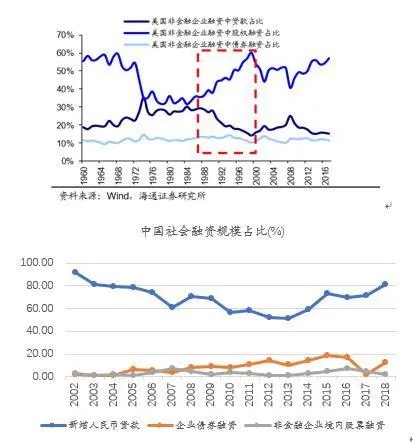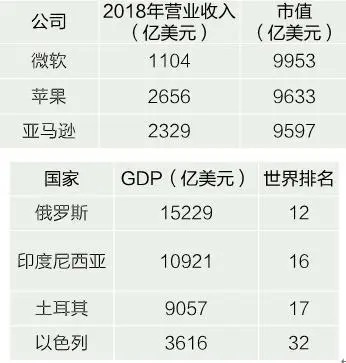2019.04.30 Source: Shenzhen Special Zone Daily 浏览次数:
During the CoStone Capital Annual Conference on April 28th, Chairman Zhang Wei stated that China's upcoming Science and Technology Innovation Board (STIB) will serve as another great practice of China's strategy of asymmetric competition in the financial market. This strategy is similar to China's industrial policies from 2000 to 2010 when the Chinese government selectively supported domestic telecommunications operators and equipment manufacturers, such as Huawei, in their competition against companies like Cisco. It was in this context that Huawei emerged in China.
Zhang Wei believes that both the development of a nation and its enterprises have standard answers. Regarding competition between nations, the economic strength and vitality of the United States, for instance, are closely related to its highly developed system of direct financing. For example, the number of effective intellectual property rights owned by the United States is similar to that of the European Union, but the sales revenue of high-tech industries in the United States is four times greater than that of the EU. The difference lies in the fact that the financing system driven by capital markets greatly facilitates innovation and entrepreneurship throughout society, whereas a financing system dominated by banks has the opposite effect. Behind this difference lies the monumental role played by NASDAQ. China is currently launching the STIB, and the timing is opportune. The STIB will be the engine for China's next round of innovation in the economy.
"Asymmetric competition refers to the competition in a market featuring asymmetrical limitations and incentives, whereby companies with vastly different strengths compete in unequal or different ways. This competition seeks to answer an increasingly important and urgent question: should small and disadvantaged local companies, operating under the background of economic globalization, market openness, and the trend of monopolistic concentration in various industries, strive to grow? And if so, how?" said Zhang Wei.
The STIB will be the engine for China's next round of innovation economy.
As an investor who has been actively involved in the venture capital industry for the past 18 years, Zhang Wei has deep insight into the environment for the development of Chinese technology enterprises. From the perspective of the relationship between the financial market and innovation, China primarily relies on indirect financing through bank loans, with a low proportion of direct financing. Direct financing accounts for about 20% in China, while in the United States, it accounts for approximately 70% to 80%. Thus, China's level of direct financing lags far behind that of the United States.
Innovation is highly correlated with direct financing, with the equity market being the most crucial component of direct financing. Professor Tian Xuan from Tsinghua University has found through research that the development of the equity market can promote innovation for enterprises with a high degree of external financing reliance, while the development of the credit market hinders innovation. For high-tech intensive industries, the development of the equity market can foster innovation for enterprises, while the credit market has the opposite effect. The conclusion is that there is a positive correlation between innovative patents and the development of the equity market, and a negative correlation with the development of the credit market.

China's level of direct financing accounts for about 20%, significantly lower than the 70%-80% in the United States. Bank loans remain the primary means of financing.
The STIB of the Shanghai Stock Exchange focuses on supporting industries such as the new generation of information technology, high-end equipment, new materials, new energy, energy conservation and environmental protection, and biomedicine. It aims to promote the deep integration of the internet, big data, cloud computing, artificial intelligence, and manufacturing industry. Currently, apart from a few areas such as the internet, artificial intelligence, big data, and new energy batteries, where the development stage between China and the United States is relatively close, the majority of the technology sectors supported by the STIB are traditional tech fields in which China lags far behind the West. In these traditional hard-tech sectors with huge gaps between China and the West, it has been quite difficult to:
- Obtain loan support from banks;
- List domestically due to a lack of scale and profitability, leading to a lack of active investment from most institutions;
- Gain recognition from overseas capital markets when listing abroad due to a vast disparity in size compared to mature market competitors, resulting in no valuation premium or liquidity and making it nearly impossible to truly raise funds.
With the introduction of the STIB, it will:
- Directly expand the investment boundaries and tolerance of arbitrage institutions in the market, greatly enhancing the direct financing capability for original and innovative technology companies, thereby accelerating the development of original hard-tech in China;
- Effectively guide domestic institutions, especially RMB funds, to actively invest in smaller and more dynamic SMEs;
- The registration-based system reform contributes to increasing the financing scale and improving the support efficiency for SMEs in the capital market;
- Require enterprises to enhance their own original technological capabilities.
The STIB and the registration-based system'slaunch will help alleviate the enormous financial pressure faced by domestic technology companies in their early stages of development and extend the survival period for these enterprises.
NASDAQ's assistance in helping the United States win the US-Japan trade war
Looking at the competition between the United States and Japan further reinforces this point. In the 1970s and 1980s, when it seemed that Japan's economy would surpass that of the United States, the key factor that allowed the United States to surpass Japan was the economic transformation brought about by the development of internet technology. NASDAQ played a crucial role in this transformation by channeling funds into the technology industry, while Japan made serious mistakes in its financial industry policies. Following the Plaza Accord, the burst of the real estate bubble, and the double blow of the trade conflict, Japan's economy was completely knocked down.
In comparison, NASDAQ actively supported small businesses when it was established, and it mutually supported Silicon Valley. This solidified the United States' significant advantage in the field of technology in the new era. On one hand, NASDAQ directed capital into high-tech sectors. Starting from the 1980s, significant breakthroughs were achieved in genetic engineering, the pharmaceutical industry, biotechnology, computers, and telecommunications, among other fields. The rapid development of scientific and technological advancements presented a ripe opportunity, which the agile venture capital industry in the United States captured, investing in high-tech sectors. NASDAQ provided the institutional framework for exiting from venture capital investments. Additionally, NASDAQ offered financial support to small and medium-sized enterprises, effectively encouraging technological innovations.
On the other hand, high technology became a new source of economic growth and promoted the upgrading of traditional industries. The high-tech industry in the United States propelled the country into its longest period of continuous economic growth since World War II. High technology facilitated industrial upgrading, leading not only to increasing output value year after year but also to the informationization and high-tech transformation of traditional industries. It became a new growth point of the US economy and a pillar industry. Consequently, the US economic growth relied on an information industry foundation. The formation and development of the information industry played a critical role in the prosperity and stability of the US economy, acting as the fundamental driving force behind the "new economic structure."

NASDAQ-listed companies such as Microsoft, Apple, and Amazon are enormously wealthy, with market values exceeding twice the GDP of Israel.
Actually, the competition between the United States and Japan provides further evidence. In the 1970s and 1980s, as Japan's economy seemed poised to surpass that of the United States, the game-changer that allowed the United States to pull ahead was the economic transformation brought about by the development of internet technology. In this regard, the Nasdaq played a crucial role by channeling funds into the technology industry. On the other hand, Japan suffered severe policy mistakes in the financial industry. Following the Plaza Accord, Japan faced the dual blow of a burst real estate bubble and trade conflicts, which ultimately dealt a devastating blow to its economy.
去年我写了三篇文章:《我们究竟需要什么样的资本市场》、《什么是真正的“做多中国”》和《汽车界下一个退场的会是谁?》,引发了一些反响。
三篇文章看似三个主题,其实还是一个主题——什么是真正的“做多中国”。
我的核心观点很简单,也是我二十多年来始终强调的:
企业家在经济与产业发展中具有不可替代的作用。因此,支持民营企业、培育和保护企业家精神,才是推动发展与进步的核心要义。
民营企业家的信心何在?来自对未来的良好预期,包括对政策、法律、营商环境、产权以及安全等各个方面的预期,其底层逻辑是法治社会和市场决定论。
如何激励企业家创新创业?核心在于创造巨大的财富效应。一个包容的、有强大财富效应的资本市场,对保护企业家精神、激励创新创业、推动科技发展具有至关重要的作用。注册制的核心是调动全社会的创业和投资热情,进而改变全社会的融资结构。
为何去年我又开始密集地提及这些问题?因为我们确乎已经处于世界大变局的关键时点了,一切都在加速演进。
在政治上,国际格局深度调整,地缘政治博弈升级,新旧力量激烈竞逐。如何续写和平与发展、稳定与繁荣的篇章,深刻地考验着各国的智慧与担当。
在科技上,技术革命方兴未艾,前沿科技不断突破,人工智能风起云涌。第四次工业革命或将以前所未有的力度推动生产力的大发展,从而深刻地改变国家前途与人类命运。
在产业上,新兴产业不断解码,中国智造强势出海,市场竞争如火如荼。以新能源汽车产业代表的新兴产业,中国正在席卷全球,行业的淘汰赛将加速。在汽车机器人时代,即人工智能与芯片定义汽车的时代,比人聪明的汽车机器人登上舞台将是这个产业的奇点!
对于投资来说,2024年,中国经济和资本市场都经历了一个从低估到价值回归的过程。
长恨春归无觅处,不知转入此中来。在一些行业和企业表现暗淡的同时,很多新兴企业正在崛起。
正如我在基石资本的22条投资“军规”中强调的那样:投资与宏观经济无关。股市不是经济的晴雨表。从5至10年来看,资本市场与宏观经济并不成正比。同时,股价走势与企业绩效也并非完全对应。
投资不是投资宏观经济,也不是投资行业和赛道,而是投资活生生的企业和企业家。我们投资的是微观中代表新经济的优秀企业。
站在2025年的新起点,AI的征程才刚刚拉开大幕,让我们继续坚定不移地重仓硬科技,大力支持民营企业发展,持续为中国经济和产业发展注入新动力,打好这场“做多中国”的持久战。